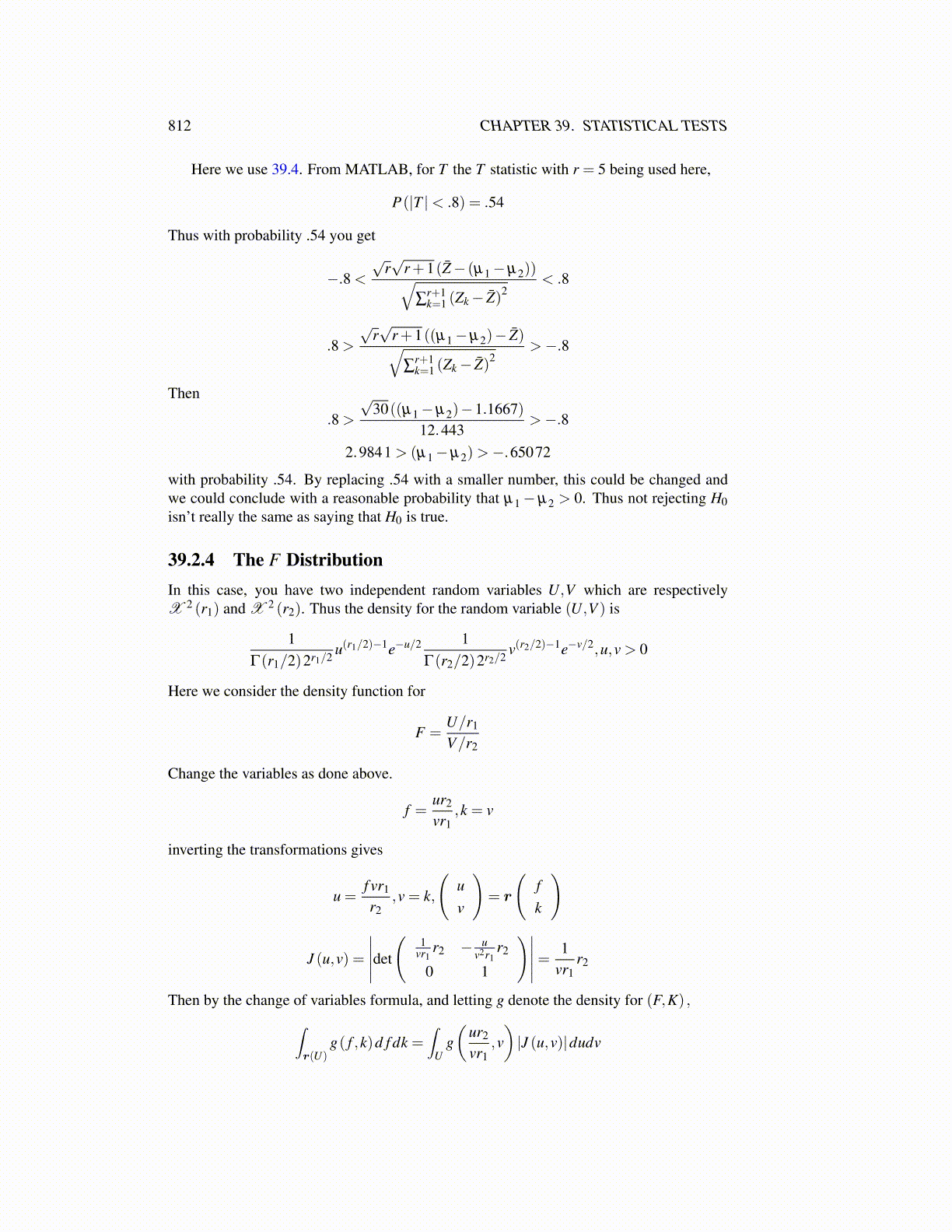
812 CHAPTER 39. STATISTICAL TESTS
Here we use 39.4. From MATLAB, for T the T statistic with r = 5 being used here,
P(|T |< .8) = .54
Thus with probability .54 you get
−.8 <
√r√
r+1(Z̄− (µ1−µ2))√∑
r+1k=1 (Zk− Z̄)2
< .8
.8 >
√r√
r+1((µ1−µ2)− Z̄)√∑
r+1k=1 (Zk− Z̄)2
>−.8
Then
.8 >
√30((µ1−µ2)−1.1667)
12.443>−.8
2.9841 > (µ1−µ2)>−.65072
with probability .54. By replacing .54 with a smaller number, this could be changed andwe could conclude with a reasonable probability that µ1− µ2 > 0. Thus not rejecting H0isn’t really the same as saying that H0 is true.
39.2.4 The F DistributionIn this case, you have two independent random variables U,V which are respectivelyX 2 (r1) and X 2 (r2). Thus the density for the random variable (U,V ) is
1Γ(r1/2)2r1/2 u(r1/2)−1e−u/2 1
Γ(r2/2)2r2/2 v(r2/2)−1e−v/2,u,v > 0
Here we consider the density function for
F =U/r1
V/r2
Change the variables as done above.
f =ur2
vr1,k = v
inverting the transformations gives
u =f vr1
r2,v = k,
(uv
)= r
(fk
)
J (u,v) =
∣∣∣∣∣det
(1
vr1r2 − u
v2r1r2
0 1
)∣∣∣∣∣= 1vr1
r2
Then by the change of variables formula, and letting g denote the density for (F,K) ,∫r(U)
g( f ,k)d f dk =∫
Ug(
ur2
vr1,v)|J (u,v)|dudv